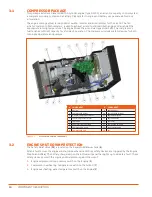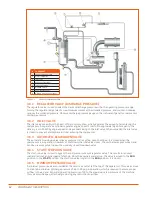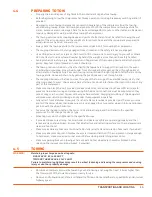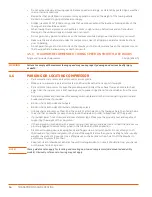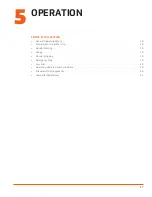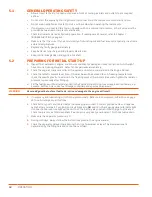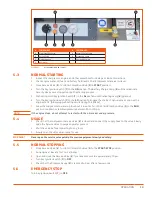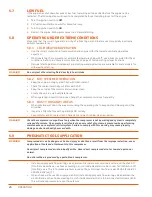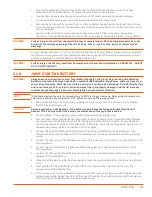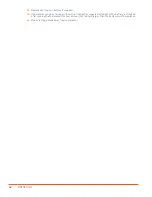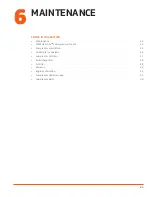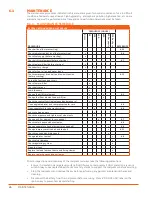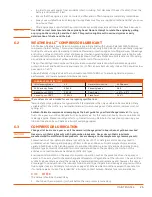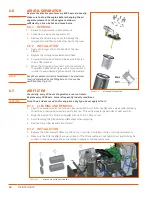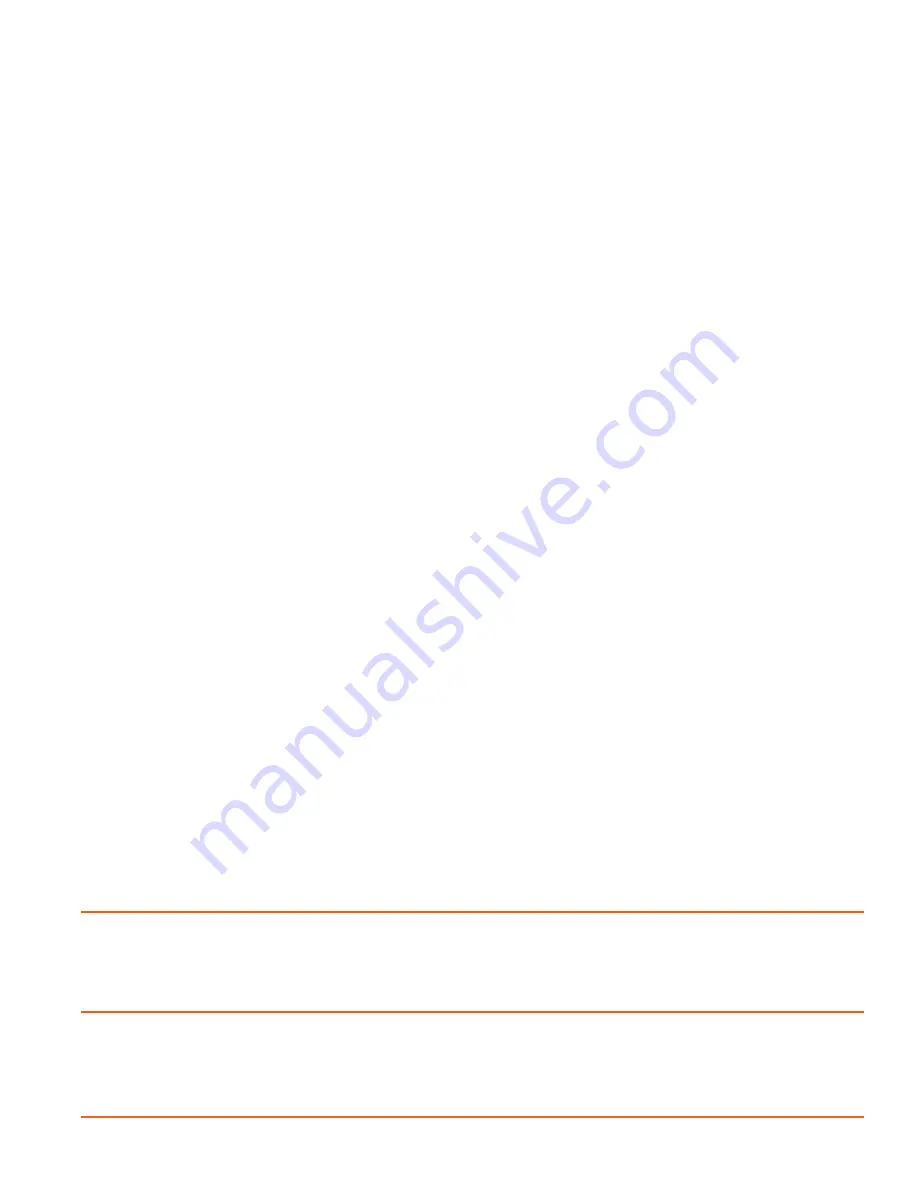
15
TRANSPORTING AND LOCATING
4.4
PREPARING TO TOW
»
Properly drain and dispose of any fluids in the containment cage before towing.
»
before beginning to tow the compressor, test brake operation, including breakaway switch operation if
provided.
»
Damaged or worn towing components can result in separation of the compressor from the towing
vehicle during towing. Inspect all towing components of both the compressor and towing vehicle for
cracks, excessive wear or damage. Check for loose or damaged bolts, nuts or other fasteners. Replace or
repair any damaged or worn parts before towing the compressor.
»
The towing vehicle and its coupling device and points of attachment must be rated for towing the wet
weight of the air compressor and the weight of stored tools, hose and other equipment plus parasitic
accumulation such as mud, snow and ice.
»
Always back the towing vehicle to the compressor and position it for coupling the compressor.
»
The coupling device must be fully engaged, closed, locked and the safety latches are engaged.
»
Use a lifting device such as a jack or chain hoist to lift or lower unit to avoid injury to yourself or others.
Do not attempt to raise or lower drawbar by hand if the weight is more than can be safely handled.
»
Avoid pinch and crushing injury. Keep hands and fingers clear of the coupling device and all other pinch
points. Keep feet clear of drawbar in case it should slip.
»
The towing restraint chains must be attached to the tow vehicle to support the drawbar in the event
of accidental uncoupling. Cross chains under front of drawbar before passing them through points of
attachment on towing vehicle. Pass each towing restraint chain through its point of attachment on the
towing vehicle. Hook each chain to by passing the grab hook over, not through, a link.
»
The coupling device must be free to move throughout the full range of travel while towing. Verify that
other components, wires, chains and vehicle attachments do not interfere with or restrict motion of any
part of the compressor.
»
Make sure chain length, and if provided, brake and electrical interconnections have sufficient slack to
prevent strain when turning and maneuvering. All chains and connections must be supported so they
cannot drag or rub on road, terrain, or towing vehicle surfaces. Dragging or rubbing of this equipment
will cause wear resulting in damage, and render this equipment inoperative.
»
Fully retract front stabilizer screw jack. If a retractable caster wheel is provided, pull the lock pin, raise
and fold the caster wheel, then make sure pin is re-engaged to secure caster wheel in full up and locked
position with the wheel horizontal.
»
Tires must be in good condition, the correct size and load range, and be inflated to the specified
pressures. Do not change tire size or type.
»
Wheel lug nuts must be tightened to the specified torque.
»
If provided, make sure all stop, tail, directional, and clearance lights are operating properly and that
lenses are clean and unbroken. Ensure that all reflectors and reflecting surfaces on the compressor are
clean and functional.
»
Make sure air delivery hoses are disconnected or fully retracted and secured on hose reels, if provided.
»
Make sure all access doors and toolbox covers are closed and latched. If the compressor is large enough
to hold a man, make sure all personnel are out before closing and latching access doors.
»
Make sure parking brakes on towing vehicle are set and that wheels are chocked or blocked before
releasing the compressor parking brakes, if provided.
4.5
TOWING
WARNING!
Maintain proper torque on wheel lug nuts:
SINGLE AXLE: 85 to 95 LB-FT
TWO AND THREE AXLE: 65 to 75 LB-FT
Failure to maintain lug tightness may result in a wheel loosening and leaving the compressor and causing
injury or death or property damage.
»
non-braked compressors must be towed by a vehicle having a net weight at least 2 times higher than
the total weight of the towed compressor ready for use.
»
Observe and follow all local, state, and federal traffic laws. Note and adhere to speed limits and minimum
highway speed.
TRANSPORTING AND LOCATING
Summary of Contents for D110PKU
Page 4: ......
Page 6: ...vi About This Manual ...
Page 13: ...5 2 SPECIFICATIONS TOPICS IN THIS SECTION Technical Data 6 Dimensions 7 ...
Page 16: ...8 Specifications ...
Page 44: ...36 Troubleshooting ...
Page 48: ...40 Parts Catalog 8 6 ENGINE ASSEMBLY ...
Page 50: ...42 Parts Catalog 8 7 ENGINE MOUNTING ASSEMBLY ...
Page 52: ...44 Parts Catalog 8 8 ENGINE TO FRAME ASSEMBLY ...
Page 54: ...46 Parts Catalog 8 9 BATTERY ASSEMBLY ...
Page 56: ...48 Parts Catalog 8 10 EXHAUST ASSEMBLY ...
Page 58: ...50 Parts Catalog 8 11 COMPRESSOR ASSEMBLY ...
Page 60: ...52 Parts Catalog 8 12 INLET VALVE ASSEMBLY ...
Page 62: ...54 Parts Catalog 8 13 AIR FILTER ASSEMBLY ...
Page 64: ...56 Parts Catalog 8 14 RECEIVER ASSEMBLY ...
Page 66: ...58 Parts Catalog 8 15 RECEIVER ASSEMBLY TO FRAME ...
Page 68: ...60 Parts Catalog 8 16 CONTROL TUBING ASSEMBLY ...
Page 70: ...62 Parts Catalog 8 17 COOLING ASSEMBLY ...
Page 72: ...64 Parts Catalog 8 18 COOLING ASSEMBLY ATTACHMENT TO FRAME ...
Page 74: ...66 Parts Catalog 8 19 COOLING SYSTEM HOSES AND RECOVERY TANK INSTALLATION ...
Page 76: ...68 Parts Catalog 8 20 OIL FILTER AND DISCHARGE HOSE ASSEMBLY ...
Page 78: ...70 Parts Catalog 8 21 FUEL TANK ASSEMBLY ...
Page 80: ...72 Parts Catalog 8 22 INSTRUMENT PANEL ASSEMBLY ...
Page 82: ...74 Parts Catalog 8 23 CANOPY ASSEMBLY ...
Page 84: ...76 Parts Catalog 8 24 CANOPY INSTALLATION ...
Page 86: ...78 Parts Catalog 8 25 LIFTING BAIL ASSEMBLY ...
Page 88: ...80 Parts Catalog 8 26 FRONT CROSSMEMBER ASSEMBLY ...
Page 90: ...82 Parts Catalog 8 27 LIGHT PACKAGE ...
Page 92: ...84 Parts Catalog 8 28 FENDER INSTALLATION ...
Page 94: ...86 Parts Catalog 8 29 AXLE AND WHEEL ASSEMBLY ...
Page 98: ...NOTES ...
Page 99: ...NOTES ...










